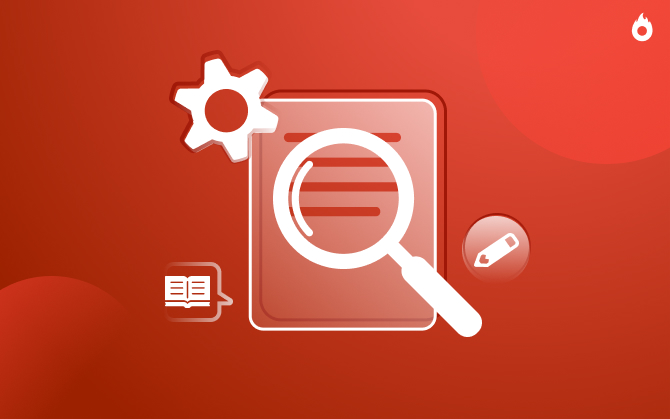
Online Plagiarism: How to Avoid it in Your Content
Online plagiarism may not be intentional sometimes, but you still have to be careful. Using checkers can help you create more innovative content, which adds to your credibility when serving clients.

Many writers and other creators mean well. They don’t intend to plagiarize anyone else’s content and usually want to have their own ideas.
Online plagiarism does sometimes happen though. It’s not always the creator’s fault though. They may not even know better when first starting out and getting paid by clients for the first time.
For example, freelance copywriters for business customers end up getting assignments with these instructions: “rewrite this content in your own words.”
It may be technically your own words, but you can’t really claim that writing as your own unless you have contributed new ideas to it.
Even if it technically passes the best online plagiarism checker, you still have to be careful. However, using checkers can help you avoid online plagiarism, which adds to your credibility when serving clients.
What is online plagiarism?
Hiring an attorney and reviewing the copyright laws of the country you live in can provide you with advanced plagiarism prevention support. For the United States, you can refer to the Fair Use Index.
That Fair Use Index provided by the U.S. Copyright office hosts an archive of all the ways you can legally use other people’s content. For now, however, you can use this definition for plagiarism:
Plagiarism is the act of using another person’s words and concepts they express as your own. You may haven’t cited their works but used quotes of theirs, nor have you given the authors, speakers, performers, artists or other creators any credit.
Plagiarism doesn’t just apply to the text in blog posts, books or other written content. You also can’t copy or use images, graphics, videos or any other form of media without the consent of the creator. This also includes research graphs and data tables.
Plagiarism.com explains some of the above concerns about copying and using other people’s content. This online publication also says, “Most cases of plagiarism can be avoided, however, by citing sources.”
A simple acknowledgment that you’re taking ideas from someone else’s work may be all you need. However, it’s best to make sure you incorporate your own thoughts into your own work because imitating someone else’s publications is never a good idea. You don’t want to be a copycat.
So, how do you avoid plagiarism?
There’s nothing wrong with gaining inspiration from another person’s work. Any good book, movie, blog post or presentation can trigger ideas in you that you want to express. That’s a healthy way to develop your own muse.
However, you still have to avoid plagiarism, but how do you do that? Making sure you have funds for legal representation may help. In the meantime, you probably will want to consider using an online plagiarism detector (a.k.a. An anti plagiarism checker).
From now on, it’s wise to regard an anti plagiarism checker as an essential content production tool. You’re going to need at least one thorough duplicate content detector if you plan to participate in regular public blogging, you create text, images, graphic or video content.
How do you know what the best online plagiarism checker is though? We’re glad you asked. It depends on what type of content you produce and what your publishing goals are.
The best Online Plagiarism Checker options
1. Copyscape
Copyscape has earned respect as the best online plagiarism checker for at least two decades. It’s been around since 2004 and still helps content producers develop their own voice. They have a free and paid version.
Pros
- Individual and batch search (check one page or multiple);
- Check results by pasting text or by entering URL;
- Optional: CopySentry automated duplicate content detection;
- Free comparison tool;
- Free plagiarism banners;
- Pay-as-you go ideal for using when you want;
- Private index database check (checking against your own content).
Cons
- Per-page cost may add up after a while;
- No unlimited monthly subscription;
- Credits expire after a year if you don’t use them;
- Only detects Google plagiarism, not other search engines.
2. Scribbr
Scribbr is an ideal anti plagiarism checker for longer reports and blog posts. It started out as a proofreading tool for people writing thesis papers.
Pros
- Plagiarism checking by content type (ex: blog post, research paper or college essay);
- Change to try software for free;
- Citation assistance (ex: APA);
- Missing citation detection;
- Checked against thousands of sources;
- Multiple pricing options;
- Similarity percentage;
- Side-by-side comparison.
Cons
- Longer wait for extra-large documents;
- No unlimited usage subscription.
3. Quetext
Millions of students, researchers, teachers and other professionals use Quetext. This online plagiarism detector was first established in the year 2000.
Pros
- Uncluttered document checking;
- Ideal for news sources and blog posts;
- Citation generator (extra tool provided);
- Multiple subscriptions, check 100,000-500,000 words;
- More words are provided than other checkers for the cost;
- Very straightforward, user-friendly.
Cons
- Subscription not limited;
- Not the best for scholarly source checking;
- Not much chance to try before buying;
4. Grammarly
Most content producers know Grammarly as a proofreading tool. It provides advanced grammar correction support and also has a plagiarism checker.
Pros
- All-in-One plagiarism and proofreading (premium version)
- Check spelling, clarification and more
- Typically finds original sources when checking for duplicate content
- Very easy to use
- Respects your privacy — doesn’t steal your original creations
- Citation assistance (ex: APA, MLA, Chicago style)
- Subscription pricing for individual or business use
Cons
- Not much results revealed in free version (limited chance to try);
- Some word limitations (up to 150,000 words in 30 days).
5. Plagiarism Checker
Teachers sometimes use Plagiarism Checker to make sure students aren’t copying research papers from internet sources.
Pros
- Phrase search and comparison tool;
- Both Yahoo and Google search engine support;
- A simple, quick duplicate content checking option;
- Free public access;
- Ideal for last-minute use in a pinch.
Cons
- No advanced proofreading tools;
- Not as reliable as other paid checkers;
- May not work for all operating systems (i.e. Chrome OS computers).
6. Plagium
Plagium has a similar interface as Plagiarism Checker but offers advanced paid features.
Pros
- Quick or deep search options;
- Free version publicly available (no subscription required);
- Text transcription support;
- Content excerpt searching options;
- Pulls up same or similar content sections;
- Publication timeline comparison reports;
- Similarity percentage reports;
- Integrates with Google Docs;
- Check files from Google Drive (premium version);
- Both per use and monthly payment options;
- High word count limits (more than other providers);
- Analyze text or URL.
Cons
- No proofreading support;
- Although thorough, it may not be 100% foolproof.
Why plagiarism checking is so important
No thought or idea is probably 100% original. That’s why they call it “research” and not just “search.” However, the way you express your thoughts, feelings or instructions must come from your original voice and your perspective.
For Your Own Piece of Mind
We give most creators the benefit of the doubt. They usually don’t want to copy anyone else, or what’s the point of producing content in the first place?
Using one of the best plagiarism checker options puts you at ease that your ideas are original enough to publish. It shows you where credit is due to other creators, and you can sleep at night assured that you’re not knowingly or unknowingly a thief.
To Protect Your Bottom Line
If you feel totally certain that you have not copied another person’s work, it will protect your professional integrity. You won’t have to worry about spending time incarcerated, which can cause your business to go under because you’re not there to run it.
Regular plagiarism checking can also help you when overseeing creative teams. It ensures that those people working under you don’t try to copy content without you knowing that could cost you legal fees.
Making sure that everyone produces unique content will also preserve your reputation too. Not only that, but your clients will also know they won’t be in trouble because of plagiarism.
To Make You Feel Good About Creating
If you’ve ever tried a plagiarism checker, it can give you a good feeling inside. Once you pull up those results, and you get a 95% or better uniqueness rating, you can say, “Yes!”.
You’ll feel more confident in your abilities that you have found a way to convey your message to the world. Your reports coming from you will be noticed by many and that’s the best way to attract attention.
To Gain a Following “The Right Way”
There have been many malicious people who just wanted to publish for money. They didn’t care if other people would be hurt by it. They’re not true creators — or, at least, they never tried to be.
Instead, some publishers have decided that they would just make a “quick dollar” by posting other movies, TV shows, blog posts, tutorials or other content that doesn’t belong to them. You don’t have to be that way.
If you’re a true creator, you don’t have to succumb to stealing someone else’s personality, voice and creations to gain a true following. As long as you create from your own being instead of trying to imitate a popular influencer.
To Not Get Kicked Out of Search Engines
You can get penalized by search engines if you start plagiarizing too much. Even the content you created yourself, you should try to make sure each web page on your network is unique enough.
Plagiarism checkers help create more innovative content
Take the warning of plagiarism seriously and always use an online plagiarism checker. If you want to be a great content creator, it’s imperative to be innovative and original.
If you need some tips about content creation to stand out, be sure to check our article on Web Content Production.





